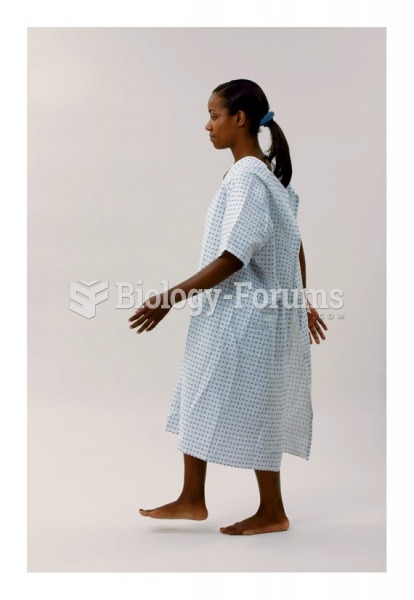|
|
|
The familiar sounds of your heart are made by the heart's valves as they open and close.
IgA antibodies protect body surfaces exposed to outside foreign substances. IgG antibodies are found in all body fluids. IgM antibodies are the first type of antibody made in response to an infection. IgE antibody levels are often high in people with allergies. IgD antibodies are found in tissues lining the abdomen and chest.
Complications of influenza include: bacterial pneumonia, ear and sinus infections, dehydration, and worsening of chronic conditions such as asthma, congestive heart failure, or diabetes.
Anesthesia awareness is a potentially disturbing adverse effect wherein patients who have been paralyzed with muscle relaxants may awaken. They may be aware of their surroundings but unable to communicate or move. Neurologic monitoring equipment that helps to more closely check the patient's anesthesia stages is now available to avoid the occurrence of anesthesia awareness.
In most cases, kidneys can recover from almost complete loss of function, such as in acute kidney (renal) failure.
 Patient with DiGeorge syndrome. Note low set ears and wide set downward slanting eyes; often these ...
Patient with DiGeorge syndrome. Note low set ears and wide set downward slanting eyes; often these ...
 Edentulous patient with pieces of bone that became necrotic and continued to slough off after tooth ...
Edentulous patient with pieces of bone that became necrotic and continued to slough off after tooth ...





